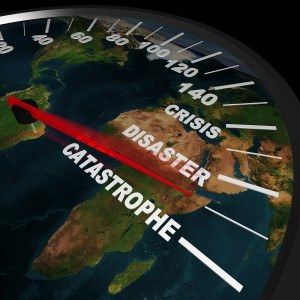Hurricane Dorian’s early September onslaught in the Bahamas, North Carolina and Canada produced total economic and insured losses in the billions, according to Aon’s monthly Global Catastrophe Recap report.
 Total economic and insured losses in the Bahamas alone are expected to reach well into the billions of dollars and are likely to become the country’s most expensive disaster on record, according to Aon’s September report. At the same time, economic damage in the U.S. and Canada is poised to approach a combined $1.5 billion.
Total economic and insured losses in the Bahamas alone are expected to reach well into the billions of dollars and are likely to become the country’s most expensive disaster on record, according to Aon’s September report. At the same time, economic damage in the U.S. and Canada is poised to approach a combined $1.5 billion.
The most catastrophic effects of the storm occurred in the northern Bahamas as Dorian struck Great Abaco and Grand Bahama islands at 185 mph, tying it as one of the two strongest landfalling hurricanes on record in the Atlantic Ocean. The other strongest landfalling hurricane in the Atlantic Ocean Basin was the 1935 Labor Day Hurricane, said Steve Bowen, director and meteorologist within Aon’s Impact Forecasting team, in emailed comments. He noted that Dorian made landfall in North Carolina as a 90 mph Category 1 storm.
Also during September, Tropical Storm Imelda made landfall near Freeport, Texas, leading to widespread flooding following rainfall totals equal to at least a 1-in-500-year return period. Total economic damage to property, automobiles, infrastructure and agriculture was expected to approach $2 billion, and due to most damage being caused by flooding, a much smaller portion of the economic cost will be covered by insurance.
Meanwhile, Typhoon Faxai made landfall in Japan’s Chiba Prefecture and later affected many populated areas, including Tokyo, which has cost insurers approximately $5 billion, with overall economic costs estimated at more than $7.0 billion. The storm damaged a minimum of 40,000 homes, with the General Insurance Association of Japan citing that a minimum of 185,000 claims had already been filed, said Aon in its report.
“September is typically one of the most active from a meteorological perspective as it represents the historical peak of tropical cyclone activity in the Northern Hemisphere. Unsurprisingly, this also translates into being one of the costlier months for the insurance industry,” said Bowen in a statement that accompanied the September catastrophe report.
“The events of 2019 will mark, thus far, the most expensive month for disasters following major cyclone events including Dorian (Bahamas & the U.S.) and Faxai (Japan),” he said. “While the year overall remains quieter from a loss perspective than 2017 and 2018, it is still imperative to remain cognizant of the weather risks that exist in the fourth quarter.”
The report detailed other natural hazard events during September, including:
- Late-season monsoon rains hit northern India, killing nearly 200 people. For the 2019 monsoon season, which began on June 1, at least 1,850 people have died. The total economic cost has neared $10 billion.
- Multiple days of severe thunderstorms brought periods of large hail, damaging straight-line winds, flash flooding and isolated tornadoes from the Rockies to the Midwest from Sept. 10-12. Total economic losses topped $300 million, with insurance covering around $240 million of the cost.
- Tropical Storm Fernand made landfall in northern Mexico, leading to widespread flooding. Economic costs reached MXN4.2 billion ($215 million) in Nuevo León alone. The overall total is likely to top $250 million.
- Torrential rain in southeastern and central Spain resulted in major flooding. Total economic losses were estimated by local government at €2.2 billion ($2.4 billion), although they may be higher. Insured losses were likely to be above €287 million ($318 million).
- Heavy seasonal rains resulted in notable riverine flooding on the river Niger at the beginning of September. Authorities in Niger reported more than 132,000 people affected by the flood, as up to 57 were killed.
- Notable earthquake events in September included in Albania, Indonesia and Pakistan. A combined 76 people were killed and more than 12,000 homes damaged or destroyed.
Source: Aon Impact Forecasting
*A version of this story ran previously in our sister publication Insurance Journal.





















 Underwriter, Actuary Fears of AI Drop; Work Needed on Collaboration
Underwriter, Actuary Fears of AI Drop; Work Needed on Collaboration  First Atlantic Hurricane Forecast for 2026 Suggests Season Close to 30-Year Norm
First Atlantic Hurricane Forecast for 2026 Suggests Season Close to 30-Year Norm  California Workers Comp Combined Ratio for 2024 Highest in 20-Plus Years
California Workers Comp Combined Ratio for 2024 Highest in 20-Plus Years 






